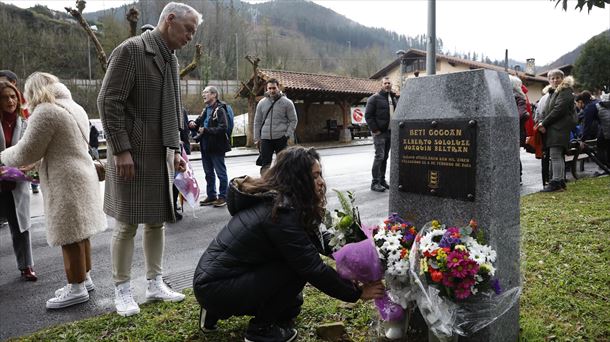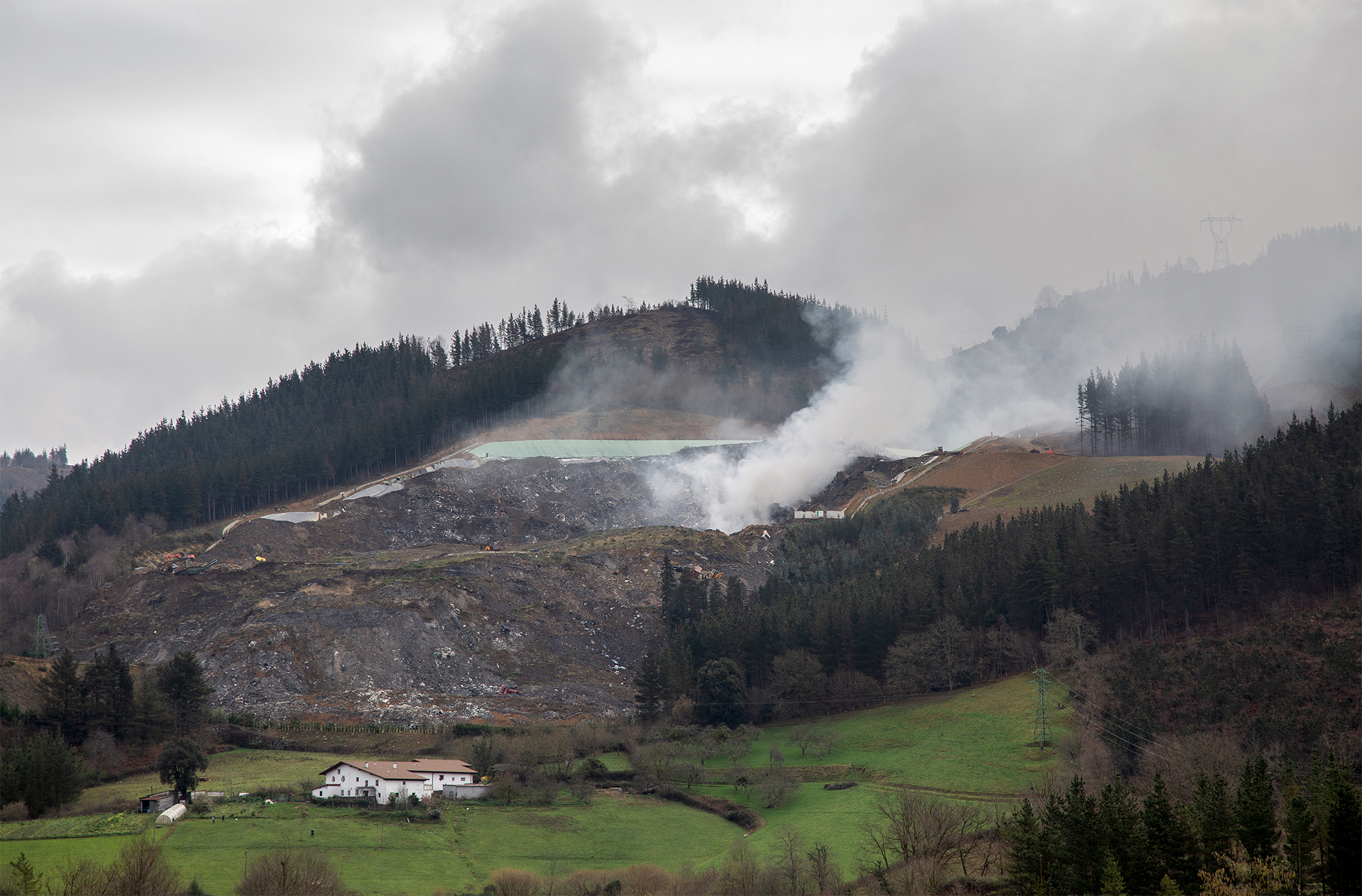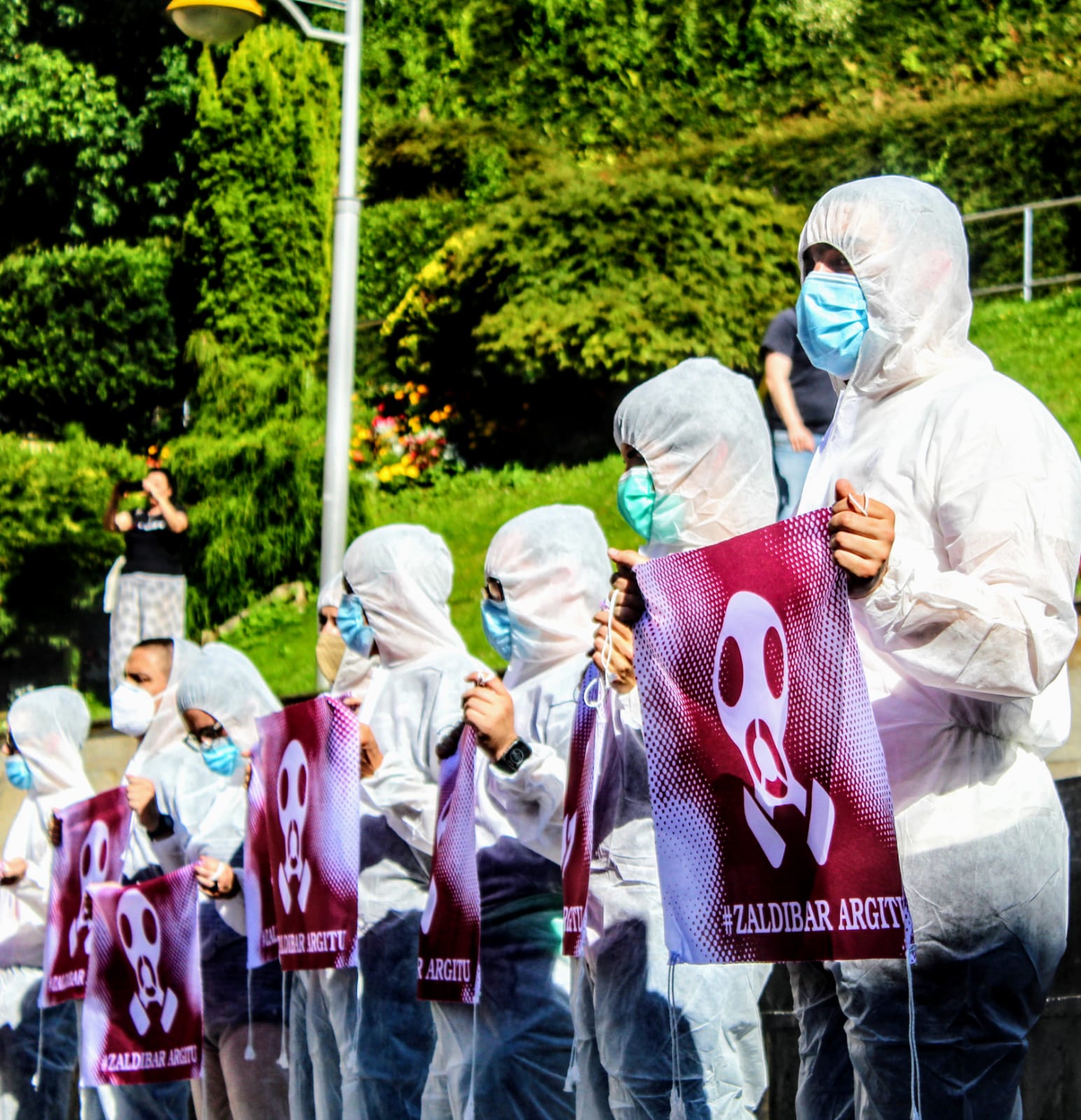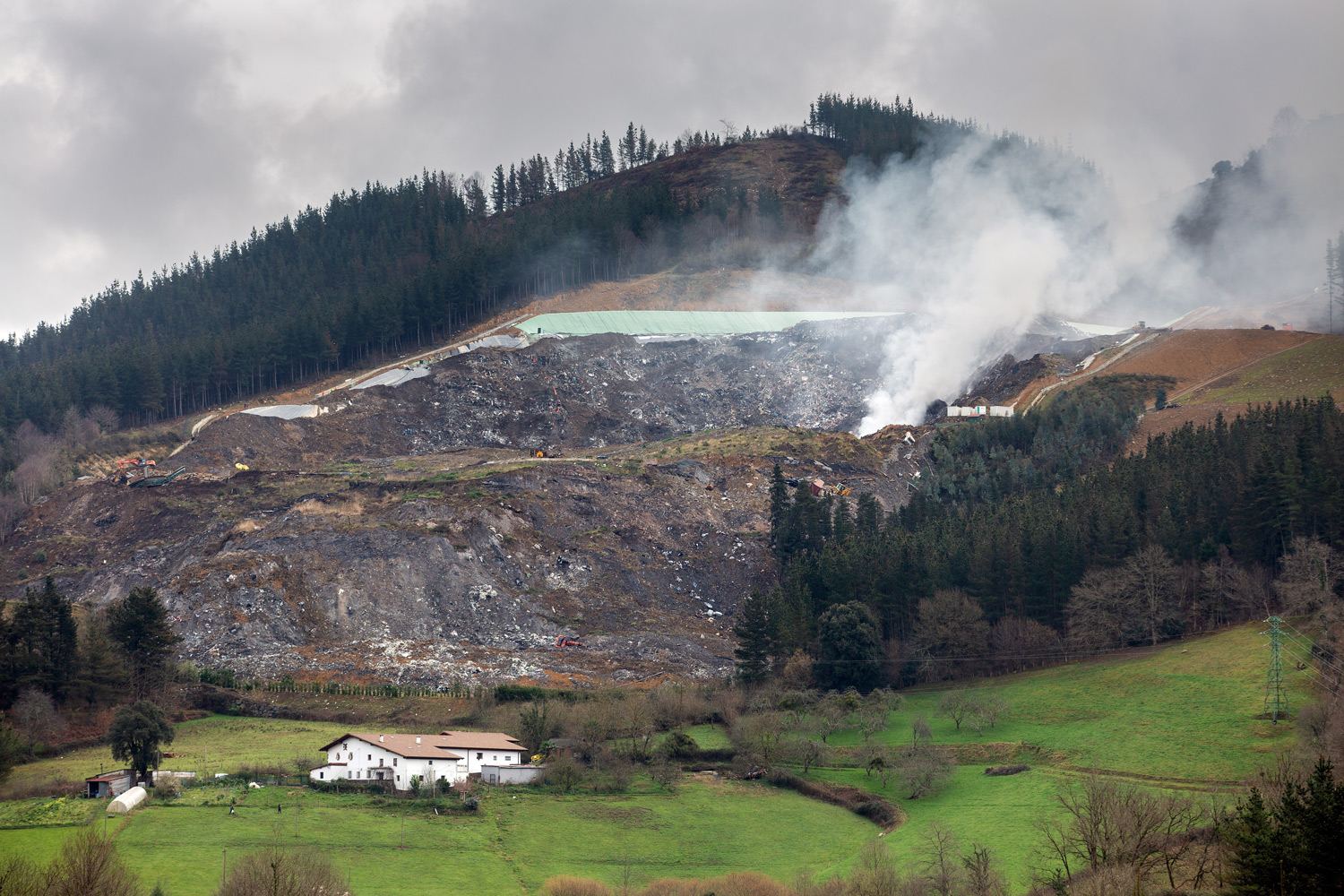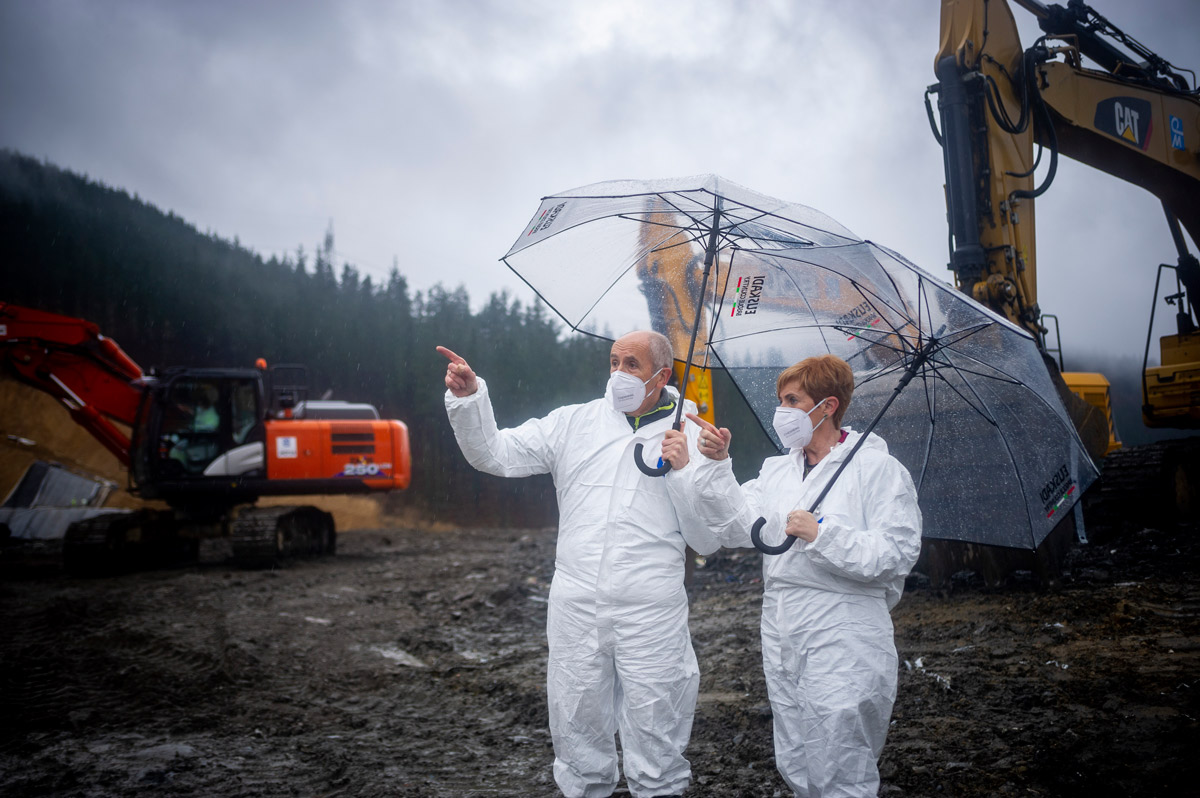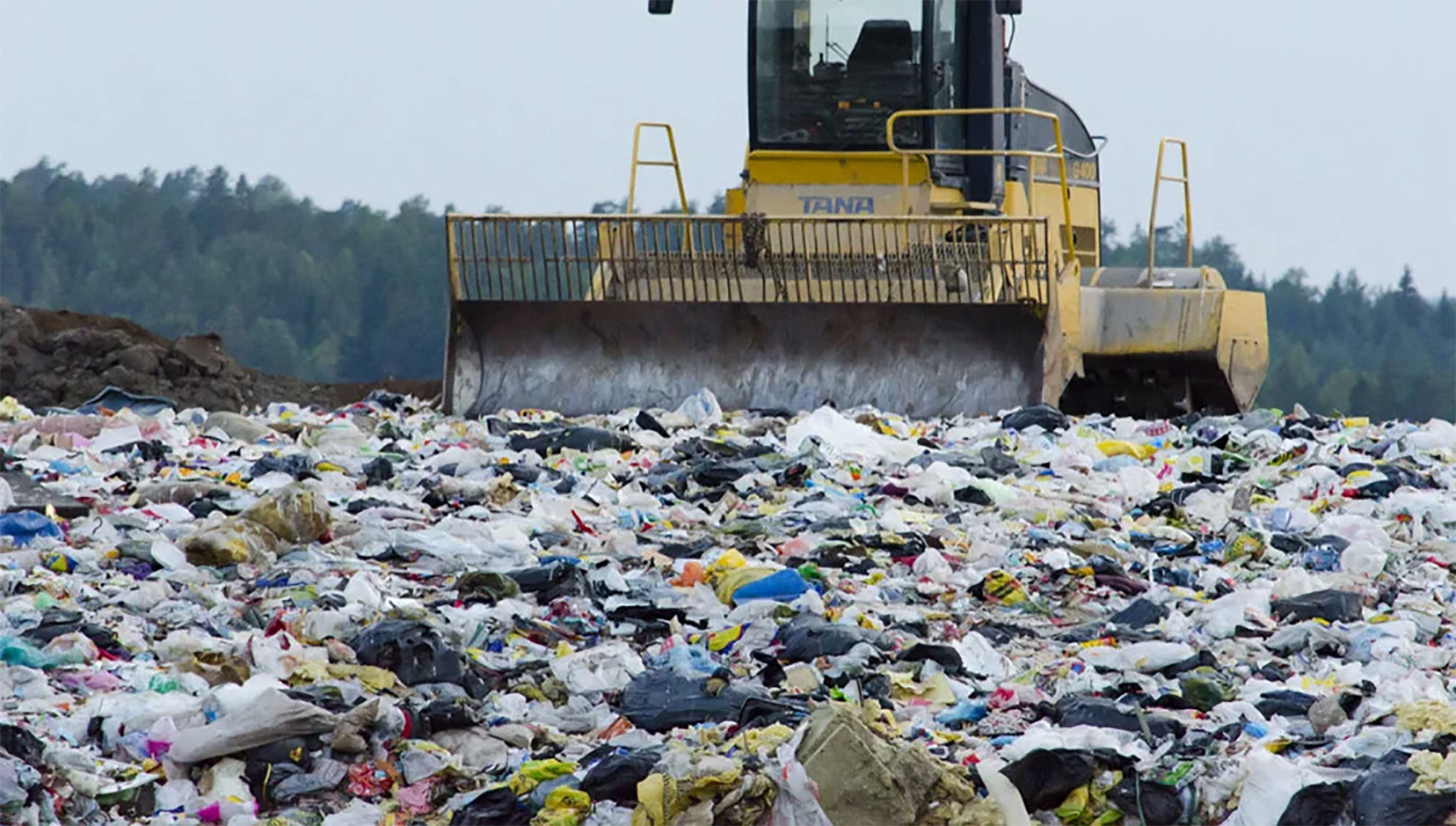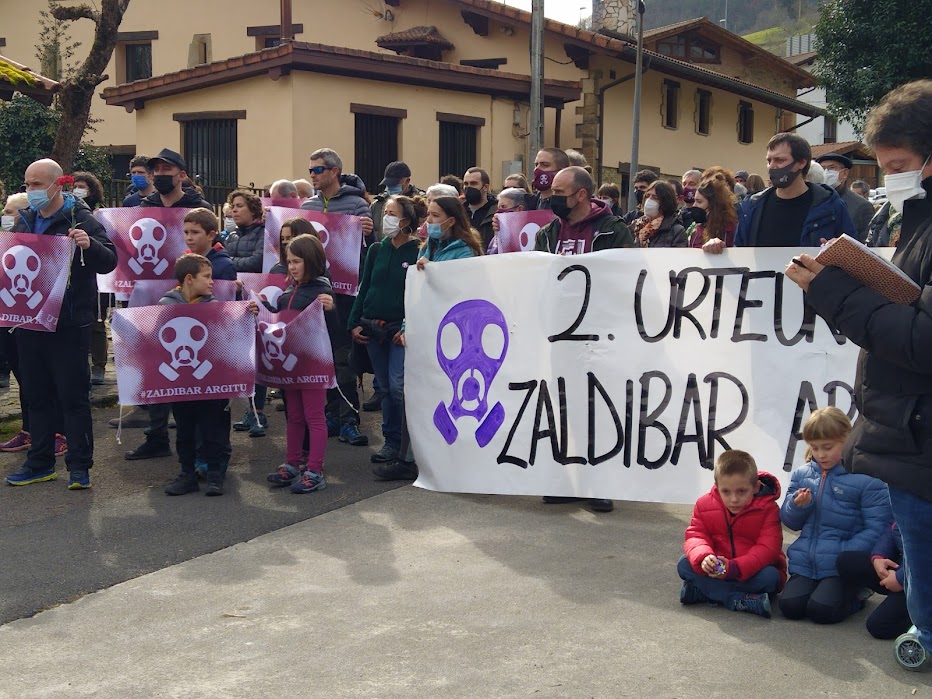The Basque Government knew that the regulations were not being complied with at the Zaldibar landfill.
- ARGIA has obtained the 2013 Integrated Environmental Authorisation from the Basque Government, corresponding to the Zaldibar landfill of Verter Recycling. Data from the Basque Government on discharges from this landfill have also been collected in 2018. The public documents themselves reveal non-compliance with the legislation in the landfill. For example, 64,500 tonnes of unauthorised waste, including urban and hazardous waste, were accumulated in 2018.

Zaldibar's Verter Recycling landfill was the first to receive the Basque Government's Integrated Environmental Authorisation (AAI) in 2007, "for non-hazardous waste". However, with the changes, the Environment Department renewed its authorisation in 2013 and added to this definition that "there was no organic load". Comparing the two permits, it is noted that the 2013 authorisation opened the door to more hazardous waste.
The 2013 IBB introduced two changes: on the one hand, it was authorised to collect a number of wastes that the landfill was prohibited until then and, on the other, it was authorised to recycle metals and metal compounds into the landfill itself. The Environment Department considered these two amendments "not substantial" and therefore the process of implementing a new EIA was not resumed. This would have meant that the renewed authorisation and the possibility of appealing to citizens and thus lengthen or delay the process to obtain the renewed authorisation would have been made public for a certain period of time.
From the point of view of transparency, it must be denounced that the AAI of 2013 was not made public in the Official Gazette of the Basque Country (yes, here you can see that of 2007) so that all citizens can see it.

Authorisation to 27 other types of waste, including asbestos
The initial 2007 IBB authorised Verter to collect 157 types of waste in the landfill. The total number of permits for 2013 is 184 (see asbestos news). Three types of waste are identified in the new Government authorisation: 47 are the most common types of waste in a landfill, i.e. those that have been deposited in a landfill because its recovery is not technically, economically or environmentally viable. A further 11 types of waste authorised in 2013 were intended for construction within the landfill.
The Initial Integrated Environmental Authorisation (AAI) of 2007 authorised the landfill to collect 157 types of waste. The total amount of waste generated by the IBB 2013 is 184 types. Most of them, 126 types, to be notified to the Environment Department before waste is collected in landfill
But what is most striking is that two thirds of the authorised waste, 126 types of waste, required that the Environment Department be informed before it was collected in the landfill and that it expressly authorised each of these waste loads. Why? In the case of some of these wastes, as they could be valued in other CAPV infrastructures, and in other cases because of their dangerousness. The latter type of waste is called "mirror input", and for example, asbestos is one of them, and incinerator slag is another. The mirror input means that the same type of residue can be dangerous or not dangerous depending on your condition. A special characterization is required to measure the dangerousness. Most of the waste admitted by the AAI of the Basque Government in 2013 was those that required special authorisation from the Department of the Environment, but the established procedure allowed many of the potentially hazardous waste to be deposited in the landfill: on the one hand, because the company was responsible for this risk characterisation. On the other hand, once Verter has informed the Department of the Environment of this waste, together with the corresponding characterisation, if within ten days it did not receive a reply from the Department of the Environment, it was authorized.
.jpg)
Basque Government data on 2018 emissions: those 64,500 tonnes that should not be there
Compare the types of waste authorised by the IBB of the Basque Government in 2013 with the data on discharges at the Zaldibar landfill in 2018. These data are official, forwarded by the Basque Government through the public information service. But the officer does, not the real one. In view of the testimonies of the hauliers who have downloaded the site from the Zaldibar garbage jump (such as the one published on 16 February in Berriak), the citizen cannot know exactly how much and how much was poured into this landfill. But through these official data you can check whether they were granted the licence.
According to the data provided by the Basque Government, in 2018 a total of 334,875,595 kilos were issued, which amounted to a rounding of almost 335,000 tonnes. However, Environmental Minister Iñaki Arriola said on 18 February at a hearing in the Permanent Representative at the request of EH Bildu that "500,000 tonnes have been dumped" in that year. What is the correct data on the quantities of waste discharged in 2018 at Zaldibar? (Here's the full video of the Permanent Representative on February 18. Arriola's explanations start at 1:16:00 in Spanish).
Furthermore, it is serious to see that, according to data from the Basque Government, more than 154,000 of the 335,000 tonnes of waste discharged had to be recovered in the Zaldibar landfill itself. Did they have the corresponding separation and sorting process or if they had dumped everything in the landfill?
The 64,596 tonnes discharged in 2018 should not be in this landfill, of which 38,000 tonnes could be dangerous. 935 tonnes of urban waste were discharged that year without authorization
This is even more serious: According to data from the Basque Government, the 64,596 tonnes discharged should not have been deposited in the landfill of Geroa Bai. Of these, 23,300 tonnes could be recovered in other CAPV infrastructures, of which 38,000 tonnes would not only not be included in the list of authorised residues, but would also be dangerous, i.e., of the entry of mirrors, requiring special characterisation to resolve their dangerousness. Most of these potentially dangerous substances were mixed with concrete, tiles, bricks and ceramics.
According to data from the Basque Government, the dumping of construction material containing asbestos in the Basque Country amounted to 2,600 tonnes. And despite the fact that the amount "is small" (935 tonnes), these official data indicate that urban waste was also dumped that year, even though the landfill was not authorised for this purpose.
.jpg)
Trap with waste to be recovered
For the recovery of metals and metal compounds in the landfill itself, the recovery of these residues would be carried out on an independent flat surface, in 1,500 square metres for this purpose. It could only manage non-hazardous waste: a total of 26 types of specified waste. These are the conditions imposed by the 2013 IBB on Verter Recycling.
Almost half of the 335,000 tonnes of waste dumped in the landfill in 2018 was around 154,000 tonnes
In the recovery process, I had to take the following steps: weighing, downloading, disseminating, separating with magnet the waste, collecting in the containers the parts valorizadas.Verter, for example, I had to bring these materials to other authorised managers for the recycling of metals, selling to scrap yards. And the unrecoverable portion (remainder) could be deposited in the Zaldibar landfill. According to the IBB, Verter had to keep a record with the company to which he had collected the metal waste, and of these, the percentage of metals he had been able to value, in particular of what kind and in what hands he had deposited it. The copy of this register should be sent every six months to the Department of the Environment of Iñaki Arriola. As has been seen, almost half of the 335,000 tonnes dumped in the landfill in 2018, some 154,000 tonnes, were recovered in the landfill.
However, according to the newspaper El Diario Vasco on 19 February, it does not appear that all these tons of petrol will be recovered. Landfill workers have recognised the Ertzaintza as cheating on recycling, as the Basque Government warned them in advance of the date of inspection: The Environment Department's inspection, before visiting the Verter landfill, purchased scrap to make it appear that it was being valued. The metallic residues that arrived throughout the year were dumped together with the rest of the unsorted waste.
Fire risk during organic life
As it is a landfill called "no organic load", it was allowed a number of paper and cardboard waste. Organic poses a fire risk, as it generates methane
The Zaldibar landfill has needed methane to burn off, and methane comes from organic waste. But how is this possible if the Basque Government has declared this landfill "without organic load"? Because there are some types of waste that have been admitted by the AAI and that contain organic matter: paper, pulp and cardboard, as well as different types of waste generated in the manufacture or processing of them. The 2007 AAI admitted two types of waste of this type, and the 2013 AAI four types of waste, all of which were communicated to the Environment Department, which should be subject to special authorisation. According to 2018 data, it is estimated that 83,000 tonnes of pulp and paper have been dumped in that year. All organic matter that has been deposited since the opening of the landfill runs the risk of fire being ignited, so it is important to separate and compress organic waste from others. In landfills, organic waste does not breathe oxygen and generates methane through the anaerobic process. This is very dangerous, as methane bags can explode.
The AAI of 2013 says that if Verter takes organic waste, it will have to install gas collection fireplaces and that the methane collected will go to a recovery plant if possible and, if not possible, burn it on the torch. In fact, unburned methane causes a greenhouse effect. If, at the time when the landfill had the full fireplace, the landfill had problems collecting and removing all methane (as the inspection reports have pointed out), once the whole structure has been dropped and dismantled, it is now impossible to properly collect and remove the methane generated by organic matter. Therefore, in the medium-long term, the risk of fires is evident in the landfill of the Eitzaga district.
The last inspection detected the failures, but did not punish them
Are these data from the Basque Government on the discharges of 2018 not very clear in concluding that the Zaldibar landfill was not properly sorting and managing waste?
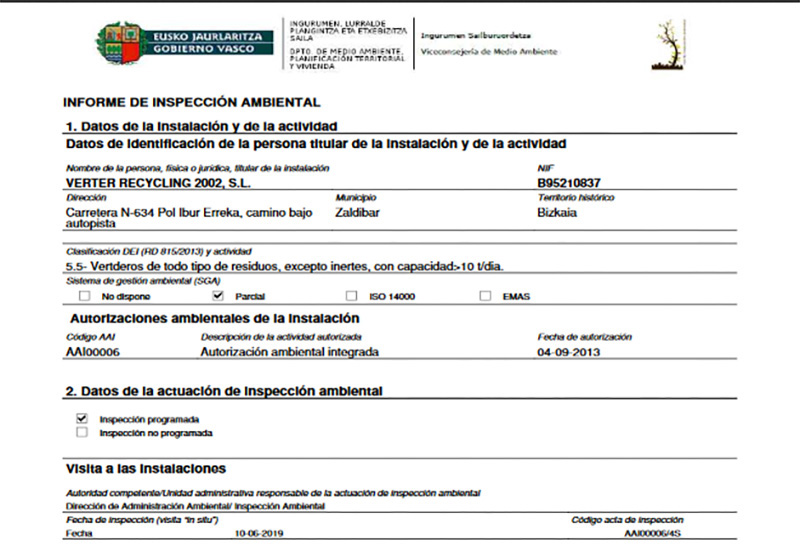
In addition, on 10 June and 10 July 2019, the Environment Department carried out scheduled inspection visits to the Zaldibar landfill in Verter. The visit was therefore arranged by appointment, not caught in surprise. However, the inspector notes 23 errors, none of which was classified as "serious". These deviations include most of the infringements that we have exposed throughout this article: for example, "Does not receive and/or treat gases produced in the landfill"; "Disposal of some waste without justifying that there was no way of valuing them"; "Does not make any characterization of the risk of residues with mirror input" (this infringement is the only one that the inspection rated as non-paper of average severity); "No paper" When Arriola had to explain to the Permanent Representative about the waste leap, he explained that it was precisely at the time of the accident that they were preparing the report for the implementation of a sanctioning dossier. Many have not believed him.
So far, the Basque Government has imposed a single sanction on Verter: For the year 2012, 33,000 euros. This is one of the mildest sanctions imposed on CAPV landfills. Meanwhile, the Basque Government earns net profits of EUR 8.57 million
Since its launch in 2011, the Verter landfill has been subject to a single sanction. It was qualified as "grave" and was held in 2012. Land contaminated with PCBs (polychlorinated biphenyls) was maintained for a period of time, although the 2007 IBB did not allow it. The Basque Government imposed a penalty of EUR 33,000 on him and forced him to take the necessary measures to recover the heritage.
Verter is not the most heavily polluted landfill in the CAV. Since 2008, the Environment Department has imposed 13 sanctions on landfill sites, all of which are described as "serious". A total of EUR 707,001 has been paid in these 13 convictions, with the smallest being EUR 27,000 and the most serious being EUR 120,000. The only economic sanction that Verter has received is therefore one of the mildest. Meanwhile, according to the information published by the newspaper Berria, until 2017 Verter received a net profit of EUR 8.57 million.
If the Basque Government had all this information (see "The Government knew..." below) and the inspection confirmed the information it had at its disposal, the reader doubts whether what the public administration has had in the Zaldibar landfill that is uncontrolled, or no more, is to look away at the reality of the knowledge, what the Government has done.
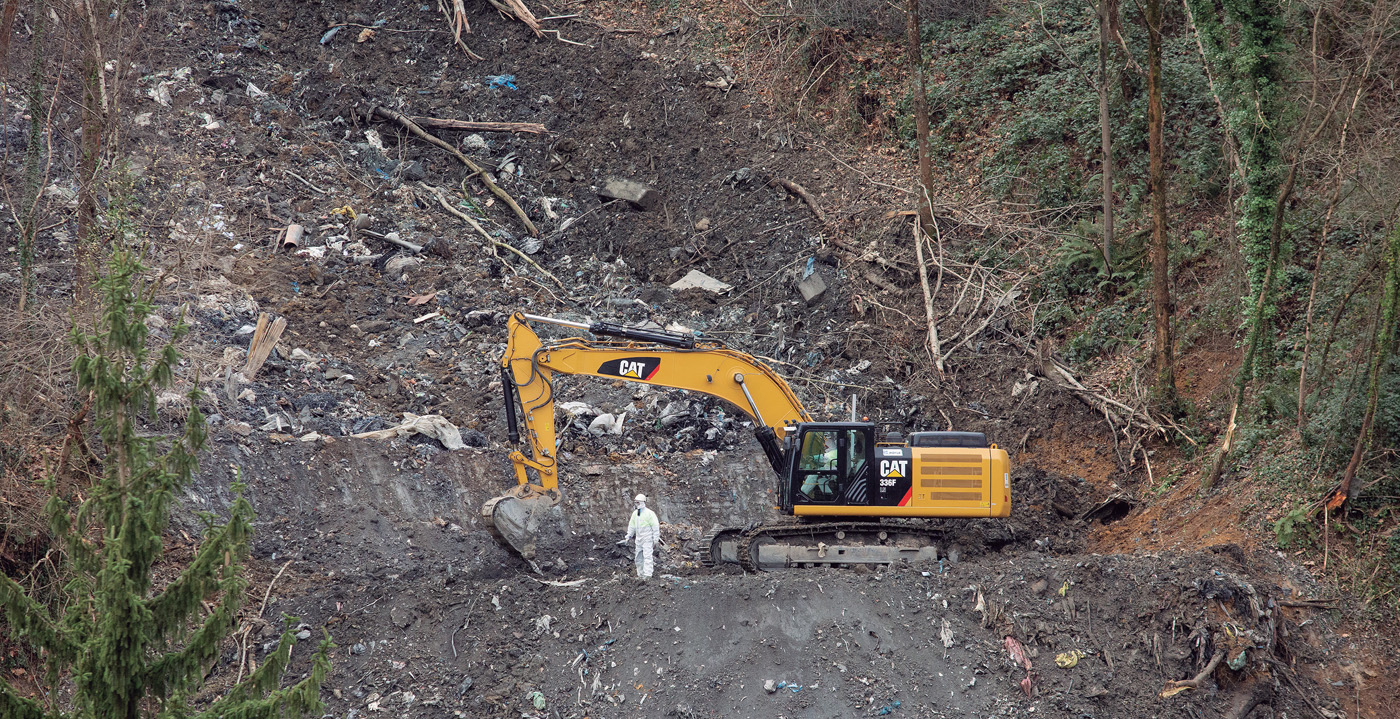
THE GOVERNMENT KNEW...
The Minister for the Environment of the Basque Government, Iñaki Arriola, made the following information available to the Permanent Representative: A total of 2.8 million tonnes of waste was poured into the Zaldibar landfill, covering an area of 1.7 million cubic metres.
The company multiplied the filling rate: In 2012 it issued 185,000 tons, in 2017 nearly 380,000 tons and in 2018 and 2019 more than 500,000 tons.
According to the 2013 Integrated Environmental Authorisation, the landfill was authorized to cover 2.7 million cubic meters and to explode for 35 years. But as a result of Verter's pace, Arriola said it would be fully accomplished by 2022.
The company Verter will send annually to the Vice-Minister for the Environment the "Environmental Monitoring Programme" which will reflect the data on waste discharged in that year and the forecasts for next year.
However, the leaders of the Basque Government will not be able to say that this form of management has caught them by surprise. According to the AAI, the company Verter will send annually to the Vice-Environmental Advisor an "Environmental Monitoring Programme". In that report, the company must collect data from recent years, such as meteorological data, discharged water, emissions into the atmosphere, etc. as well as the degree of compliance with the landfill: "An updated topographic map should be made with the limits of the landfill, the area of the sealed landfill and the area of the landfill where the last year's waste has been collected." It goes on to say that the report should also include the forecasts for the following year: "The forecast of the areas that will receive the waste next year will be collected, with an indication of the approximate levels".
If Verter has sent the Environmental Monitoring Programme with all the data every year, the Basque Government was aware of the progress of the landfill.
Most of the waste (126) must be notified by the company to the Basque Government before it is collected in the landfill. So, if I knew their condition,
The same applies to the types of waste discharged: As required by the IBB 2013, did the landfill send the Basque Government a six-monthly record of metallic waste to be valued? and in the case of the 126 types of waste requiring special authorization from the Department of the Environment, did the Government receive the communication before the landfill accepts each of these wastes? If the landfill referred all this information requested by the IBB to the Basque Government, would it not have sufficient evidence to know that the Zaldibar landfill did not correctly classify the waste?
Visiting urban waste collection and reduction sites should be a compulsory school tour. Open a cookie pack to swallow two inner cookies and mentally construct the package surface path. The shame of human activity lies in destiny. Ultimate desolate landscape of the sins of... [+]








